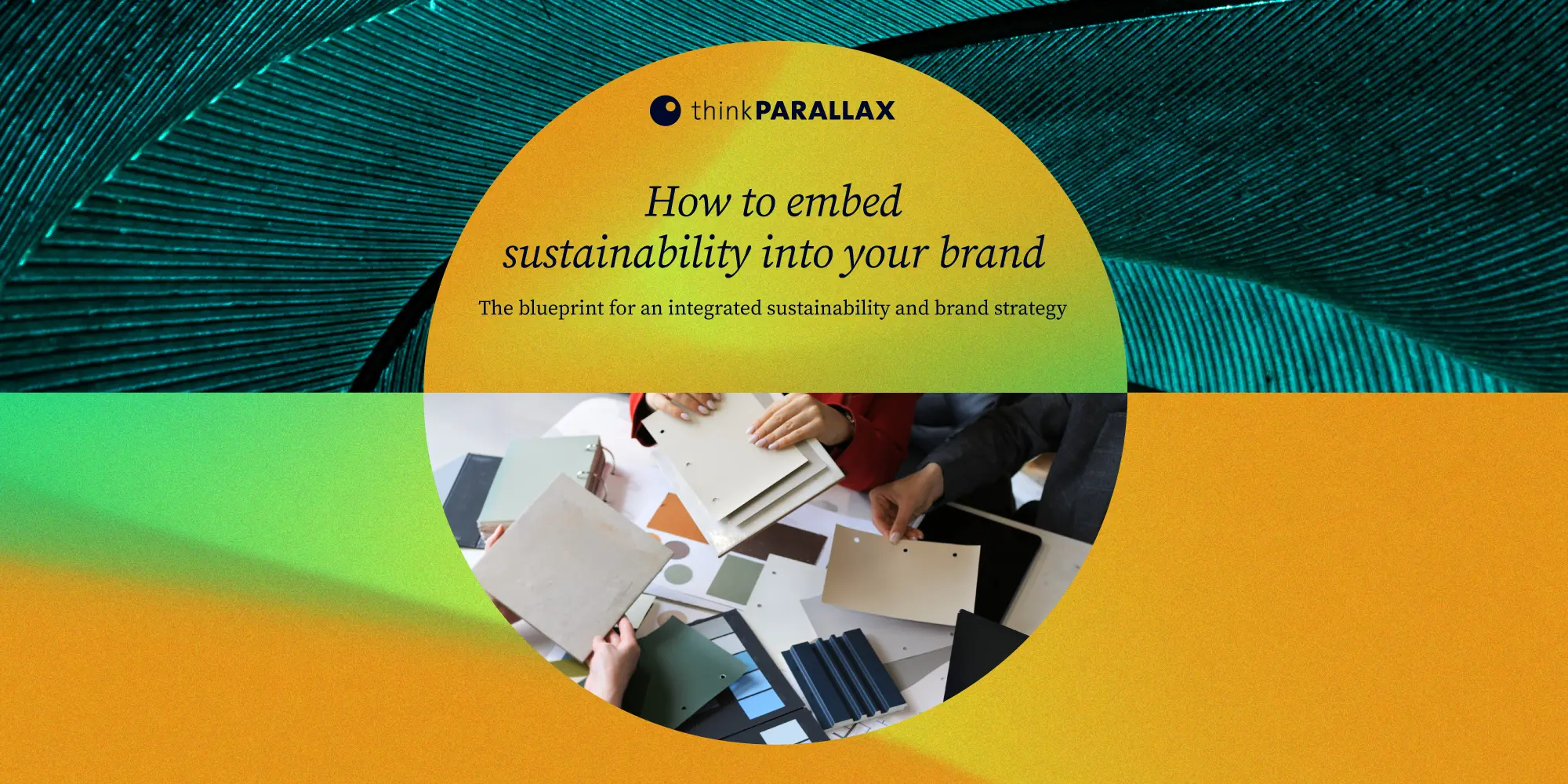When most people hear “double materiality assessment,” their minds go straight to regulation — specifically, the EU’s Corporate Sustainability Reporting Directive (CSRD). Stricter EU regulations are raising the bar for corporate transparency and forcing companies to focus on what is material to their business in their reporting. But instead of sighing at another regulatory requirement, we’ve found the process can be surprisingly energizing and engaging. At thinkPARALLAX, we’re seeing clients discover that a double materiality assessment (DMA) is far more than a compliance exercise. Done right, it’s a powerful tool for clarifying strategy, surfacing core values, aligning internal teams, and fostering more genuine connections with stakeholders.
CSRD-aligned versus non-CSRD aligned DMAs: What's the difference?
CSRD-aligned:
If your company falls under CSRD, a DMA isn’t optional — it’s the foundation of your report. Reporting will be phased in across four “waves”:
- Wave 1 (2025, FY 2024): Companies already reporting under the old Non-Financial Reporting Directive (NFRD).
- Wave 2 (2026, FY 2025): Other large EU companies that meet thresholds.
- Wave 3 (2027, FY 2026): Listed SMEs, small credit institutions, and captive insurers.
- Wave 4 (2029, FY 2028): Large non-EU companies with significant EU operations.
Recent EU adjustments — including exposure drafts of revised standards released in mid-2025 — have shifted deadlines and clarified requirements. The message remains clear: companies in scope must assess and report on sustainability topics that are most material to their business and stakeholders. For a deeper dive on the amended exposure drafts, see our ESRS 2.0: Roadmap to the Latest Updates.
To help companies navigate the complex and evolving requirements of the CSRD, the European Sustainability Reporting Standards (ESRS) were developed by EFRAG (European Financial Reporting Advisory Group) to provide a clear and consistent framework for sustainability reporting. Mandated under CSRD, ESRS provide clear guidance on what to report and how to apply the double materiality principle, requiring companies to assess issues through a two‑pronged lens:
- Impact materiality — effects on society and the environment.
- Financial materiality — issues affecting business value or performance
EFRAG’s Double Materiality Conceptual Guidelines (issued in 2022 and subject to refinement once EFRAG’s updates are implemented) clarify how to determine material topics, emphasizing significance, stakeholder relevance, and public-interest transparency. In practice, CSRD-aligned companies must follow the ESRS framework to conduct a DMA and disclose both impact and financial materiality.
Click here for a refresher on navigating CSRD and preparing for reporting.
Non-CSRD Aligned:
Companies outside CSRD’s scope can still benefit from conducting a DMA. Even in the absence of strict regulatory mandates, the process helps to prioritize the topics most material to their business, supply chains, and stakeholders. This allows them to proactively anticipate risks and opportunities, build strategies that strengthen resilience — without waiting for policymakers to dictate the process.
Traditionally, sustainability reporting has focused on impact materiality, while financial reporting under International Financial Reporting Standards (IFRS) has focused on financial materiality. The ESRS uniquely integrates both perspectives. From our perspective, using both lenses doesn’t significantly lengthen the process — and ultimately delivers a richer, more holistic understanding of what truly matters to the business and its stakeholders.
This approach also enables companies to align with peers and evolving market expectations. It signals to stakeholders that the organization is taking a proactive sustainability approach — and can, if desired, position the company as a leader in its sector. This alignment strengthens credibility, enhances competitive positioning, and better prepares companies for potential future regulatory requirements.
Why double materiality matters
Whether companies are acting to meet regulatory requirements or voluntarily to strengthen resilience, double materiality is becoming an essential business practice, propelled by market forces, investor expectations, and the need for forward-looking strategies:
- CEOs link sustainability to value: In 2025, 54% of CEOs linked sustainability directly to business performance—up from only 34% in 2018 (Bain).
- Sustainability investment grows despite uncertainty: 62% of business leaders plan to increase sustainability investments in 2025, a 10% jump from last year (Capgemini).
- Decarbonization delivers returns: More than 80% of companies report financial benefits from decarbonization, with some seeing ROI exceeding 10% of revenue (BCG).
- Greenhushing risks stakeholder trust: Despite rising investments, public disclosures and target-setting are declining, reflecting a “greenhushing” trend that risks eroding stakeholder trust (The Conversation).
Taken together, these trends show that sustainability isn’t optional — it’s integral to future business success. And double materiality is the framework that bridges compliance with strategic advantage.
When compliance meets creativity: our approach
Why you would want to work with us
A DMA can feel daunting — complex, time-consuming, and, at times, overwhelming. But it doesn’t have to be a dry, box‑checking exercise. Nor should it be. We’ve helped both CSRD‑aligned companies and those pursuing non-mandated approaches turn the process into a clear, purposeful, and impactful strategic exercise.
Whether driven by regulatory requirements or voluntary ambition, our approach simplifies complexity and delivers tangible value. We break the process into three practical phases:
- Understand the Context — leveraging industry trends and analysis, understanding your value chain, and identifying your stakeholders needs.
- Identify and Prioritize — surfacing actual and potential impacts, risks, and opportunities most relevant to your business.
- Assess and Finalize — validating priorities through stakeholder engagement and defining what truly matters.
Our Difference
- Facilitating meaningful, cross-functional workshops that break down silos and spark collaboration across departments, turning fragmented perspectives into shared understanding.
- Translating complexity into clarity — turning stakeholder insights and materiality considerations into concrete, actionable strategies.
- Infusing energy and creativity into the process, creating a collaborative space that inspires innovation and discovery.
Impact We’ve Seen
Investors and other stakeholders involved in the process have recognized the value of our approach. For example, one investor shared during a stakeholder interview for a client’s DMA that they deeply valued the company’s commitment to the process: “It’s setting a higher standard among their portfolio companies and positioning the company ahead of competitors.”
Clients have also told us the process has reshaped how they think about sustainability in their work and lives — noting that “participating in the DMA sparked new perspectives and meaningful changes in their day-to-day decision-making.”
For sustainability leaders, this kind of recognition reinforces that a DMA is not just about compliance — it’s a strategic tool for credibility, influence, and long-term differentiation.
Delivering clarity on what matters
So yes — conducting a DMA will ensure you comply with CSRD, stay ahead of evolving regulations across the EU, U.S., and beyond, and meet growing stakeholder expectations for ESG transparency. More importantly, it delivers clarity on what truly matters to your business, unites teams in collaboration, and transforms sustainability reporting into a living process that sparks innovation, sharpens strategy, and energizes your organization.






